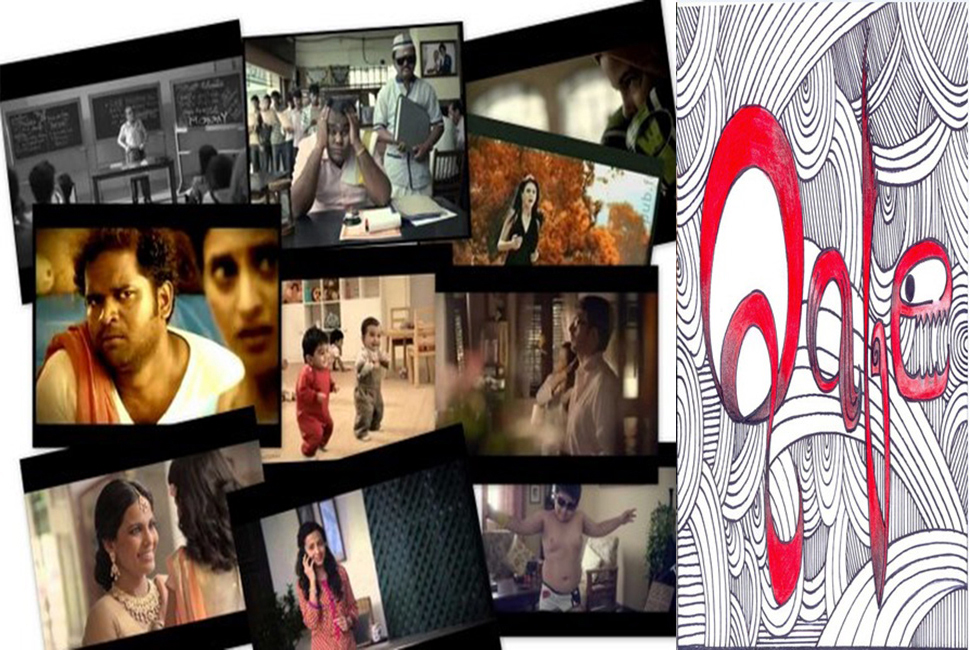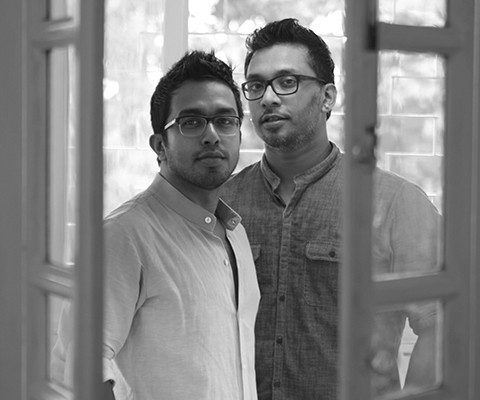As Qafe proceeds into 2015, Paramita Banerjee stepped into the world of popular culture of the year gone by through advertisements and interrogates the ideas of gender and power relations …
So – what’s popular culture? ‘Popular’ as per its dictionary meaning is something that is prevalent, common, accepted, well-liked, trendy. It’s far more difficult to capture the exact meaning of ‘culture’ so precisely, since it can mean anything and/or everything from philosophy and civilisation to tradition and urbanity, but maybe ‘ethos’ would be a good substitute. Popular culture, then, could be loosely described as what reflects the predominantly prevalent moods/norms/practices/ perceptions/ behavioural patterns at any given point of time. However, popular culture can also refer to an idea that captures many people’s attention and imagination, even if it is somewhat different from the predominantly prevalent. As Qafe steps into a new year, the qafeteer stepped into the world of popular culture of the year gone by, as reflected through television commercials.
Why television ads? Well, advertisements certainly represent the predominant popular ethos in more ways than one. Created with the intent of influencing a wide spectrum of choices from fast moving consumer goods to gems and jewellery; cars, mobiles and computers; not forgetting condoms and sanitary napkins and nappies for little infants – commercials are bound to reflect the prevalent popular perceptions and belief patterns, on the basis of which ads are created to influence consumer choices. Just think of the hoards of commercials that incessantly urge women and men to buy products that will supposedly lighten their skin colour and open all doors from jobs to marriage for women and free access to any number of swooning women for men. Had the country not been obsessed with skin-deep fairness, it is unlikely for so many fairness creams to flood the market and spend exorbitant amounts on commercials to prove that each one is better than the rest.
Take Fair & Lovely fairness cream, for instance. It does not mention “for women”, but its advertisements speak loud and clear about its target clientele. The ad released in May 2014 caught my attention, however. Father convincing a daughter who has finished her studies to get married to a suitable match, though she wants to get into a job. Soon, arrives a friend who offers a Fair & Lovely cream as an indispensible ingredient to be ready for the wedding. That is used, of course, and the inevitable fairness and its consequent confidence build-up happens for the daughter to be able to tell her father that she’s ready for marriage – but three years later, when she also has a steady career to meet her proposed husband on equal footing. Something, then, has moved, it seems. Young women are being encouraged to choose a career over marriage immediately after completing their studies and fathers are being asked to learn to deal with that. The mother’s benign smile seems to suggest that she is happy at her daughter’s decision. Promoting the concept of equal partnership at home and work between married couples?
Well, I discovered an ad that actually does promote equal partnership at home and work, and guess by whom: bharatmatrimony.com. This commercial shows a husband defending his wife’s decision to carry on with her job to his parents, even when she returns late from work while her in-laws are with them. This commercial was released in October 2013 – not last year. Considered in combination with the Fair & Lovely ad described above, one thing becomes clear: urban India is waking up to the need of accepting women’s right to have a career. But the institution of marriage has to be saved at all costs, of course. So, wake-up call by dream merchants to parents and prospective grooms alike to be supportive.
The Samsung Galaxy Note 4 ad featuring a father readying his daughter for school even as he prepares a presentation for his office is a commercial within the same framework. A reference to the mother would certainly make it more pertinent for the equal partnership theme, but who would grudge the simple promotion of responsible fatherhood even if the mother is conspicuously absent by reference also!
The TBZ bridal jewellery ad, too, shows that standard machismo may no longer work with smart women. As the groom is hoisted higher by his party for the bride to be unable to reach him for the garlanding, she simply pretends to be ready to garland one of his family members standing on the ground and well within her reach therefore. The young groom is seen on his knees at her feet next. If only men would learn the moral of this dialogue-less ad . . . Or, is it that only brides flashing such elaborate diamond jewellery can expect such behaviour?
The Manyavar wedding wear for men commercial promoting an inter-religious marriage between a Hindu Punjabi (on the basis of clothing) groom and a Christian bride deserves mention in this context simply for promoting what it does. At the cost of the Hindu Punjabi dancing tradition beating the solemnity of a Christian wedding, though, but still . . . Would the market ever have the courage to promote a Hindu-Muslim wedding in similar fashion, beyond Bollywood tear-jerkers in the hard world of stiff competition?
As part of my homework for writing this piece, I watched 278 television commercials released in 2014, listed at www.indiantvads.com and it was sheer torture, to put it mildly. With due reverence to readers, though, I did go through the process and short-listed some among them as definitely better than the rest. The topmost among them is the Nescafe ad with a stammering stand-up comedian, who uses his stutter to his advantage. It was heart-warming to see that some human values still persist in the ruthless world of market competition for Nestle to have thought of a commercial that would encourage people with speech impairment to draw courage. Another ad in the same genre is one of the three Vodafone Red advertisements where a mobility-impaired man is seen to be helped in his journey by all. But unlike the Nescafe ad, this one left this qafeteer with some discomfort. Firstly, why did it have to be set in Latin America? Does Ogilvy India, the creator of these ads, think that Indians as a nation are far too uncaring about people with disabilities? Also, there is a lurking feeling that the ad promotes condescension and patronising, rather than empathy and respect.
Idea mobile’s new ad, No Ullu Banaoing (don’t try to take me for a ride) is a good one, indeed, as it exposes lies used at ease by everyone from politicians to an average man trying to impress women, from a self-styled god-man to an auto-rickshaw driver – and goes on to depict how each one is caught in his own trap through the use of mobile internet. As the trak.in/tags/business/2014 website mentions, not sure if “the Idea internet is worth it, but the ad certainly is.” It is as important to resist being taken for a ride in small things as in big ones.
Cadbury’s new commercial for Bournvita shows a mother racing with her son till he finally defeats her. Loved this one for several reasons: a) no celebrity endorsement; b) no preaching on vitamin A and D and who knows what else; and most importantly, c) it takes a mother out of her usual home-based carer-nurturer role to showcase that mothers, too, can be athletes and their role as nurturer extends beyond the four walls. Could it be a daughter, however? And, could we also see the athlete mother in some role other than her son’s competitor to egg him on to defeat her and become a winner?
Getting back to the fairness issue, the Fair & Lovely Men Fairness Cream ad featuring Saif Ali Khan and Yuvraj, launched in August 2014, demonstrates clearly that the company does not carry any chip on its shoulder to support gender justice and equal partnership at home and work. When the target clientele is male, the only reward of using the projected product is to have women becoming interested. But then, Fair & Lovely is certainly not alone in promoting this. Check the Emami Fair & Handsome cream commercial released in September 2014: the same theme. However, this qafeteer has been left wondering what has happened to the idea of tall, dark and handsome men being the most attractive, as propagated by the Mills & Boons romance pulp fiction of the seventies when we were teenagers. Preferences have changed, it seems. Maybe one needs to compare matrimonial statistics of Kashmiri men, who certainly possess fairer skin genetically because of their climate conditions, with those from Kerala, where men are certainly darker.
If anyone feels offended at the above comparison, it would be worthwhile to remind that differences in skin tones are natural among human beings and there is no discrimination in recognising and accepting that reality. There is far more deliberate discrimination involved in the pervasive promotion of a lighter skin tone that the beauty industry has been shamelessly propagating for many years now. The only ‘progress’ achieved so far is that Fair & Lovely fairness cream for women was launched way back in 1975 by Hindustan Lever while it took three full decades for men to be caught up in the fairness rigmarole with Emami launching the Fair & Handsome cream for men in 2005. And finally, if the respected readers feel that there is too much of fair and lovely in this piece – I would humbly request them to check out the commercials of 2014: there is too much of skin fairness ads all over. And, I have not gotten into the anti-ageing creams for women since they have not caught up with men yet. No gender discrimination, okay!


